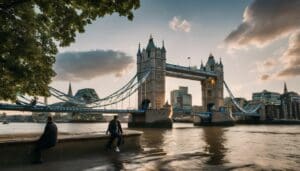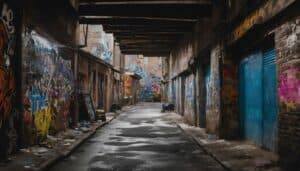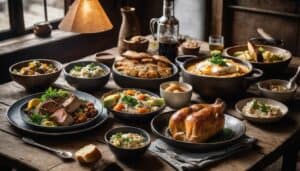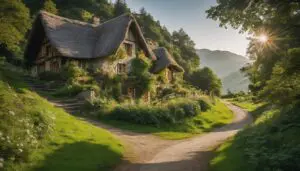Cultra Manor – Ulster Folk and Transport Museum
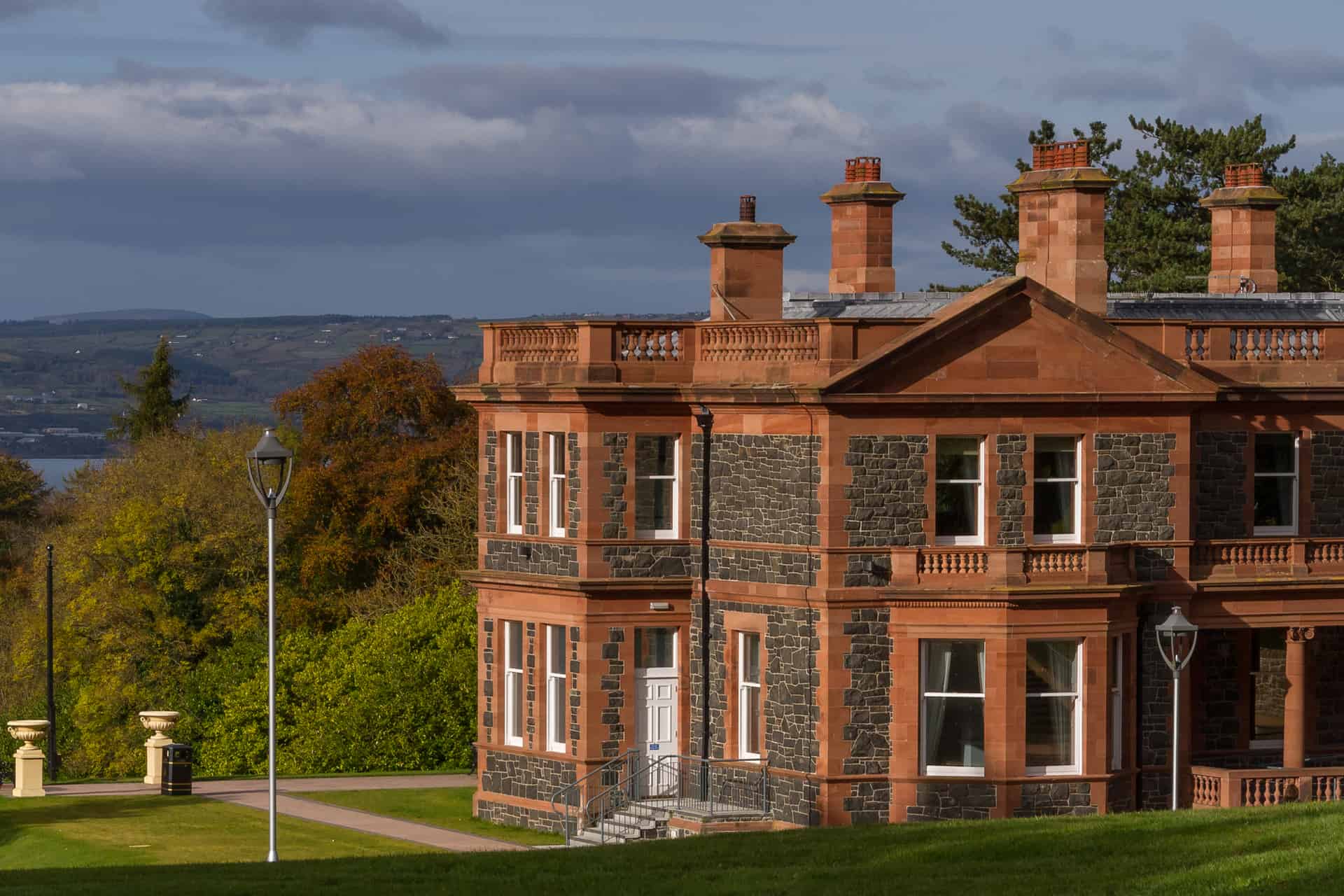
Updated On: April 07, 2024 by Noha Nabil
The Ulster Folk and Transport Museum is one of the museums in Northern Ireland that gives visitors the chance to experience life from more than 100 years ago. While simultaneously experiencing one of Europe’s most comprehensive transport collections. One of the different buildings in this museum and considered part of the Ulster Folk and Transport Museum is the Cultra Manor.
It was initially built as a large plain house with a central bow and a battlemented parapet. The front of this manor has projected pedimented ends joined by a balustraded Ionic Parapet, the right hand projecting forth like a porch. Inside the Cultra Manor, there is a long, two-storey service wing which is joined to the main block by a wing.
History of the Manor
This manor was owned by Sir Robert Kennedy, who retired from it in 1912 after he built it in 1902. The Kennedy family’s former home was the Cultra House, which passed out of their ownership in the 1870s. Sir Robert and his wife, Lady Kennedy, died within a few months of one another. They left the property for their four daughters. After World War II, the family found out that the maintenance of the house would cost them a lot of money; thus, another smaller neo-Georgian house was built for them on the same grounds.
The manor house and the pleasure gardens were then sold to the Ulster Folk and Transport Museum in 1961, and conversion of the building was undertaken. This led to the transformation of the place from the inside. Which included reallocating the main rooms as exhibition areas. The servants’ quarters are workshops and a library; the garage is an administration block.
In 2010, a massive sum of money was spent on Cultra Manor to transport it to what we see today. It now provides an area where many exciting events can be held. One of the events held in the Cultra Manor is the Limited Edition, Afternoon Teas. This unique event takes you back to when people enjoyed afternoon tea. It also lets people experience the history surrounding the Kennedy family.
Popular Wedding Venue
One of the things making Cultra Manor famous these days is that it is now being used as a wedding and attraction location. One of the things differentiating this Manor is that it provides those staying at it with the best views across Belfast Lough. Cultra Manor is becoming a popular wedding venue in Northern Ireland. Especially for couples seeking something a little different. Weddings can also use the Folk park and the manor house for an extra special day.
Cultra Manor, located in Holywood in Ulster, was the former residence of the Kennedy Family until the 1870s. It is one of the last mansions of the landed gentry to be built in Ireland.
The manor was sold in 1961 to the Ulster Folk Museum, and the building was converted to accommodate exhibitions, workshops, and a library. It opened to visitors in 1964.
The house is surrounded by beautiful hills and glens to the east and west, with walks and bridges.
Refurbishment of Cultra Manor
In 2010, Cultra Manor was refurbished with an estimated budget of £3 million. The Edwardian-style manor is now a suitable setting for gala dinners, awards ceremonies, conferences and meetings for up to 200 people. Guests can also be accommodated on the beautiful terrace leading to the gardens at the back for dinner or drinks or visit the Ulster Folk & Transport Museum.
The area is perfect for exploration as it is littered with thatched cottages, farms, schools, workplaces, churches and shops from over 100 years ago. Set in over 170 acres of rolling countryside overlooking Belfast Lough, visitors can admire the traditional crafts and meet farm animals.
Step into the Ulster Museum to view the majestic steam locomotives and explore horse-drawn carriages, electric trams, boats, motorbikes, fire engines and vintage cars.
Ulster Folk & Transport Museum
Experience life over 100 years ago and explore one of Europe’s most comprehensive transport collections.
Encounter costumed locals, demonstrating traditional crafts in cottages, farm dwellings, schools, shops, horse-drawn carriages, vintage motorbikes, and cars at the Transport Museum, along with exhibits including rare photographs of the Titanic.
Current Exhibits
-
The Last Ulster Schooner
Visit the Land, Sea and Sky gallery at the Ulster Folk & Transport Museum and return in time with the last Ulster schooner Result. She has been a workhorse, warrior, and film star over her 125 years of existence. Follow her journey through the decades in our exhibition.
The result was built in Carrickfergus Shipyard, County Antrim, for the coastal cargo trade. She is the last Ulster-built ship left, out of the hundreds of small sailing ships that plied their trade around the coasts of Britain and Ireland and were once of such importance to coastal communities.
Follow her journey through the decades in our new exhibition and discover more about her life as a Q-ship in the First World War fighting German submarines, her starring role on the silver screen and her final voyage to where she now sits overlooking Belfast Lough.
-
Baird’s Print Shop
The shop is designed to illustrate the range of work undertaken by a letterpress printer in a small town in Ulster in the early 1900s.
There has been a printing industry in Ulster for over three hundred years. By the late 1800s, the printer’s shop had become part of the fabric of life in Ulster’s towns. This exhibit was sponsored by the W & G Baird firm, one of Ireland’s most essential printers.
-
Ballydown National School
Ballydown National School was built in 1865, and its original location was next to Ballydown Presbyterian Church, near Banbridge County Down.
The Ballydown School is modelled according to the contemporary national schools built in that period. The original Ballydown School closed down in 1939.
-
Ballydugan Weaver’s House
This building is modelled on linen weavers and small farmers’ houses built in the 1850s in Central. Weavers and their families occupied many houses like Ballydugan.
-
Catholic Church
This is the church’s original building, initially in Selshion townland. It was dedicated to St John the Baptist in 1793. It was moved to the Folk Museum in 1990.
The church is rare because it was built more than fifty years before the repeal of the Penal Laws, which regulated the rights and status of Catholics in Ireland.
-
Carpenter’s Workshop
This building was built in the 1830s and was initially situated on Rowland Street, Belfast. It was moved to the Folk Museum in 1978.
Various woodwork was carried out in similar workshops, such as repairing horse-drawn carriages and furniture.
-
Church of Ireland
This church was built in 1790 and was moved from Carnacally, Kilmore, County Down to the Folk Museum in 1976.
-
Coalisland Spade Mill
The spade mill was built in the 1850s and was moved from the Derry to the Folk Museum in 1960.
-
Picture House
The Picture House is a cinema built in the 1850s in Gilford, County Down. It was moved to the Folk Museum in 1996.
The building operated as a silent cinema until 1931. It was used as a hay store and later adapted as a cinema shortly before the First World War.
The films were projected directly onto a whitewashed wall. For several decades, the Gilford Picture House provided popular entertainment for the village of Gilford and its immediate locality. The audience of the Picture House mainly consisted of local mill workers.
The Gilford Picture House closed around 1931 but remained unchanged over the following decades.
-
Corner Shop
The Corner Shop was built in 1889 and moved to the Folk Museum in the late 1980s. This shop is typical of a traditional urban corner shop.
Things to do While You are Here
Cultra Manor’s grand interior and features are perfect for holding weddings and evening affairs. Additionally, civil and religious ceremonies can be held in the Drawing Room. The terrace is also perfect for scenic wedding photo sessions.
The Kennedy Room, where all these beautiful occasions are held, is named after the family who owned the estate. It takes up to 150 guests seated at round tables.
The Drawing Room is also perfect for entertainment, and the evening buffet can be laid out in the dining room.
Be Treated Like a Superstar
You can have the wedding of your dreams at Cultra Manor and get superstar treatment through some of their added offers to make your special day even more special!
- Complimentary entry to the Ulster Folk & Transport Museum for you and your guests on your wedding day
- A self-guided Wedding Trail for your guests
- Red carpet entrance
- A private dressing room for the bridal party to use all day
- Silver cake stand and knife
- Mouth-watering menus, carefully prepared by our executive chef
- Excellent wine list to complement the menu
- Master of ceremonies
- In-built sound system
- Whether you’re looking for a place for your once-in-a-lifetime event or a fantastic area to explore, Cultra Manor is the place for you!
- And so much more!
Ulster Folk and Transport Museum are one of the famous attractions people like visiting in County Down, Northern Ireland.
Have you ever been to the museum? What did you think? We would love to hear about your experience in the comments below.
Also, check out some of our other blog posts that might interest you, such as; Independence Day at Ulster American Folk Park | Ulster Folk Museum | Carrickfergus Museum | Down County Museum | Irish Linen Centre and Museum | Titanic Museum | Ulster Transport Museum | Armagh County Museum


